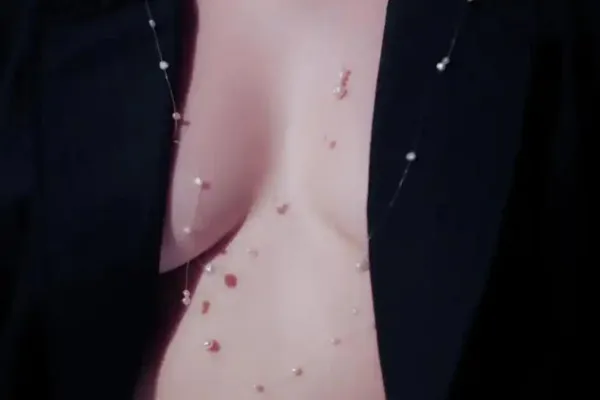Portfolio
The nature of our client work is often confidential, meaning that most of our content writing and copywriting projects can't be shared publicly.
Here you'll find a small taste of some of the work we have produced. If you'd like to learn more about the content niches we cover and what we can do for you, get in touch.

Everything You Need To Know About Inverted Nipples
Everything You Need To Know About Inverted Nipples

Lifestyle Collective September 25, 2023
By Julie-Ann Sherlock
I have something to get off my chest but I don’t want to make a total boob of myself. I didn’t realise that inverted nipples are so common and can affect 10% to 20% of women.
But don’t worry, I have gotten abreast of the situation, and it turns out it’s nothing to be concerned about. So, let’s nip some misconceptions and concerns in the bud by looking at ways to address any potential discomfort or worries and explore the options available to remedy shy nipples.
The Basics
Retracted or inverted nipples occur when the nipple turns inward or lies flat instead of pointing outward. Often, people are, to quote Lady Gaga, “born this way,” and it just naturally occurs. This can be due to an underdevelopment of the milk ducts while in the womb.
For others, it can be gradual due to age or indicate a health issue that needs to be checked out by a medical professional.
If you have been breastfeeding, the milk ducts may have become scarred, or if you have had breast surgeries or had some damage to your chest, the lil ol’ pointers may decide to retreat, and inversion can occur.
As we age, our bodies undergo many changes. Menopause can cause the milk ducts to shrink, pulling the nipple inwards and making them less pronounced. As if hot flashes, irritability, and a host of other issues aren’t enough for us to contend with! Sigh.
While some may feel self-conscious about it, it’s important to remember that it’s a natural variation in breast anatomy. But, if you want to do something about it, there are various solutions, from nipple shields to surgical procedures, that may help.
Levels Of Inversion
Like most things in life, the level of nipple inversion can be on a spectrum. The ranges are:
Grade 1: This level usually causes minor issues and can be resolved relatively easily by pulling the nipple outward or doing some massage techniques. A small suction device or nipple shield like the Philips AVENT Niplette can also help, as can piercing using a barbell. Most people with this grade can breastfeed without too much hassle.
Grade 2: Slightly more severe than Grade 1, surgical methods will likely be required to correct this issue. For those hoping to breastfeed, Grade 2 nipple inversion may cause some problems. However, some surgeons advise not to undergo surgery before having children as the milk ducts may be severed, further hampering the ability to feed naturally.
Grade 3: The most severe cases are considered Grade 3 and require surgical intervention to correct the problem. The ability to breastfeed is unlikely, and a more intricate form of surgery is necessary to overcome the issue.
Surgical Intervention
If you’ve been living with inverted nipples and it’s getting you down, you may be considering corrective surgery. You must consult a trusted medical professional and look at the different options before you decide which one is right for you and your body.
One technique is called the “inverted nipple release,” where a small incision is made at the base of the nipple to release any tight bands of tissue causing the inversion. This is pretty straightforward for most people.
Another technique is called “nipple grafting,” which involves taking a small piece of tissue from another part of your body and using it to create a more prominent nipple. This can be an excellent option for those with severe cases of inverted nipples.
Lastly, there’s the “suspension suture technique,” which involves using sutures to lift and support the nipple into a more outward position. This technique can be less invasive than other methods and may be suitable for milder cases.
Remember, each case is unique, so consultation with a qualified surgeon who can assess your situation and recommend the best approach is the smart move.
If you decide on corrective surgery, here are some essential things to know:
Corrective surgery is usually done as an outpatient procedure and typically takes less than an hour to complete.
The different surgical techniques vary regarding incision location, nipple placement, and recovery time.
It is vital to choose a board-certified plastic surgeon with experience in performing corrective surgery for inverted nipples.
While the recovery time after the procedure is relatively short, and most patients can return to work and other activities within a few days, it is still crucial to follow post-operative instructions carefully to ensure proper healing and minimise the risk of complications.
Surgery results can vary, and it may take several weeks or months to see the final outcome, so be patient. While corrective surgery can improve the appearance of inverted nipples, it is important to have realistic expectations and understand that surgery cannot guarantee that the issue will not recur down the line.
Remember, everyone’s body is unique and beautiful in its own way. So embrace your inverted nipples and rock your confidence like the Queen you are.

Talk to us
Drop us a line if you have any questions or want to enquire about our content marketing & SEO content writing services! We'll be happy to chat and explore ways to help elevate your brand.
© Copyright 2023 Metaverse Content Lab

